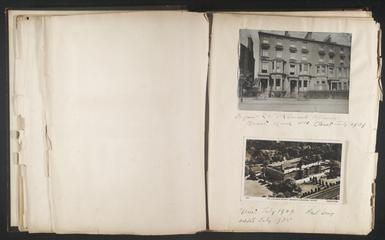
London and South Western Railway Company
The London and South Western Railway Company (LSWR) opened their first line in stages in from London to Southampton in 1838 under the name London and Southampton Railway Company. A year later the company name was changed to the LSWR. By the early 1900s, the line had been extended and ran from London to Plymouth via Yeovil, Exeter and Southampton. Some of the branch lines of the LSWR, further into Southern counties, were in direct competition with the Great Western Railway Company and others were worked in partnership with other railway companies such as the Somerset and Dorset Joint Railway.
Nine Elms in London was the main depot of the LSWR, until Waterloo Station was opened by the company in 1848. Nine Elms became the goods depot for the London and South Western Railway Company and Waterloo became one of the biggest passenger stations in the country. The main LSWR engineering works was transferred from Nine Elms to Eastleigh by 1909.
Sir Herbert Walker was General Manager of the London and South Western Railway Company from 1912, when he instituted the third-rail electrification programme, and was appointed General Manager of the Southern Railway Company in 1923, until his retirement in 1937. There were a number of notable engineers attached to the LSWR including John Viret Gooch, brother of Sir Daniel Gooch who was Locomotive Superintendent from 1841 to 1850. Dugald Drummond was the Chief Mechanical Engineer from 1895 to 1912; he facilitated moving the Works from Nine Elms to Eastleigh and their subsequent expansion and modernisation. Alfred Szlumper, appointed Chief Engineer in 1914 was key to the expansion and redesign of Waterloo Station, completed by 1922
The LSWR began electrification of its suburban lines from Waterloo in 1913. The first section was opened in 1915, and almost all the other planned routes were opened before the First World War curtailed the project. The London and South Western Railway Company was very prominent in handling all types of traffic during the First World War, due to it’s position serving London and the ports on the South Coast.
The LSWR also had an ocean-going port at Southampton, which was a growing rival to Liverpool and Glasgow for transatlantic travel. The purchase of Southampton docks by the LSWR in 1892, alongside their expansion and modernisation, was organised by Sir Charles Scotter, the General Manager from 1885 to 1898. Scotter then became Chairmen of the Company from 1904 to 1910. The LSWR also ran steamer services from Southampton to the Channel Islands and France.
In 1923, the LSWR was grouped into the Southern Railway Company by the Railways Act of 1921.

